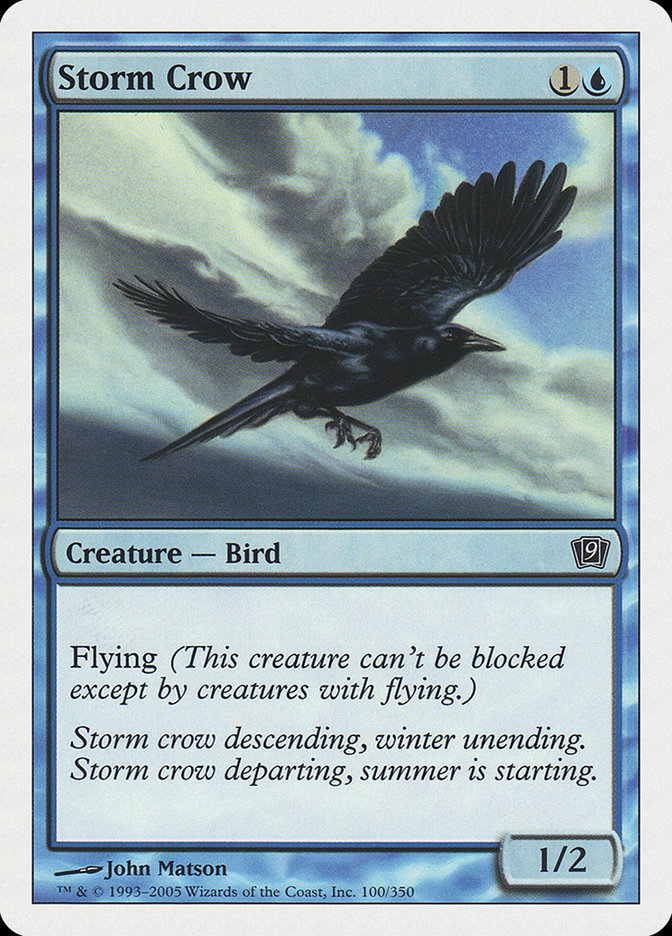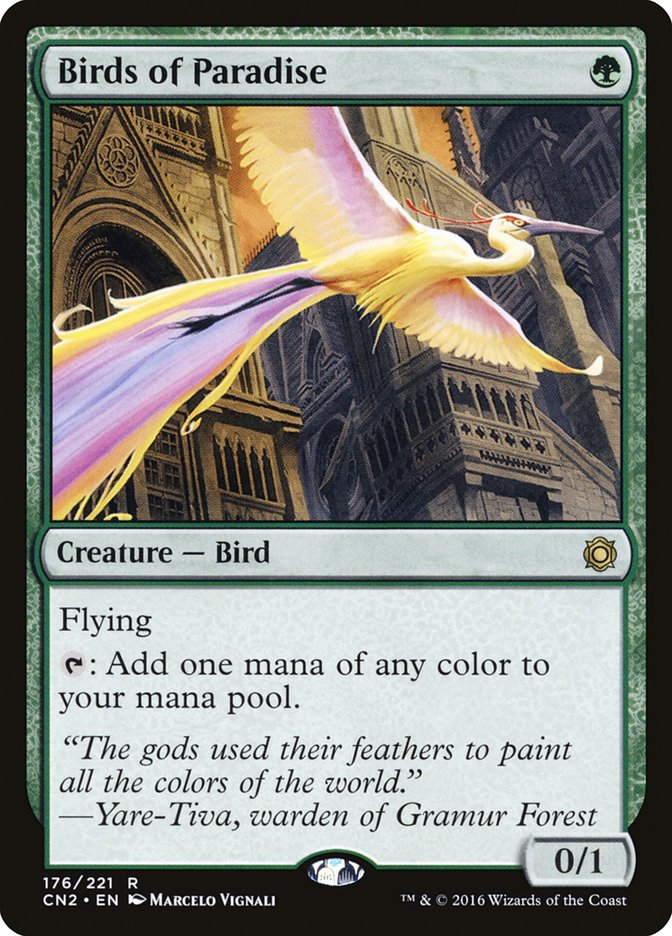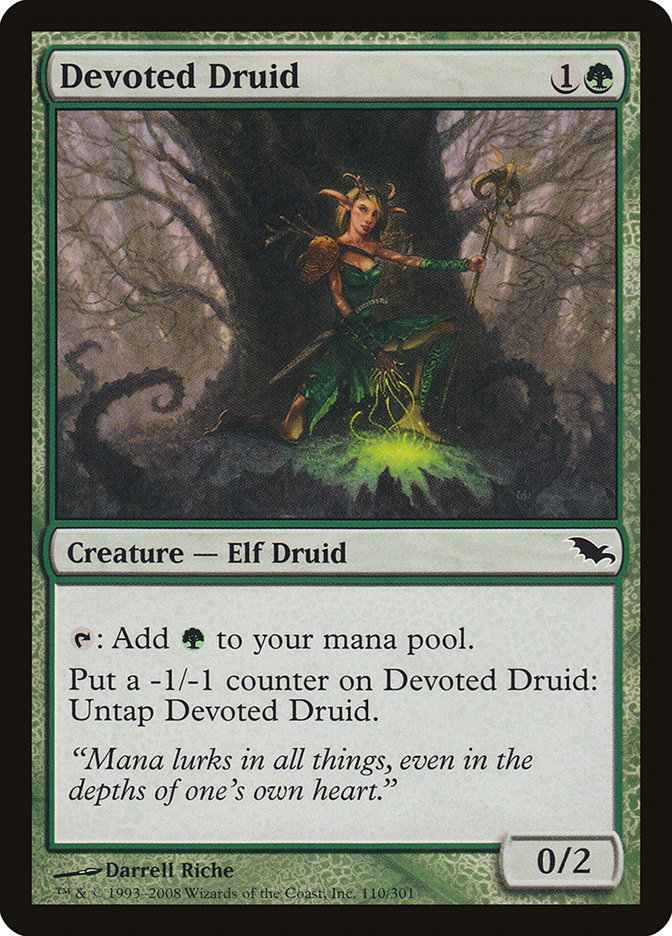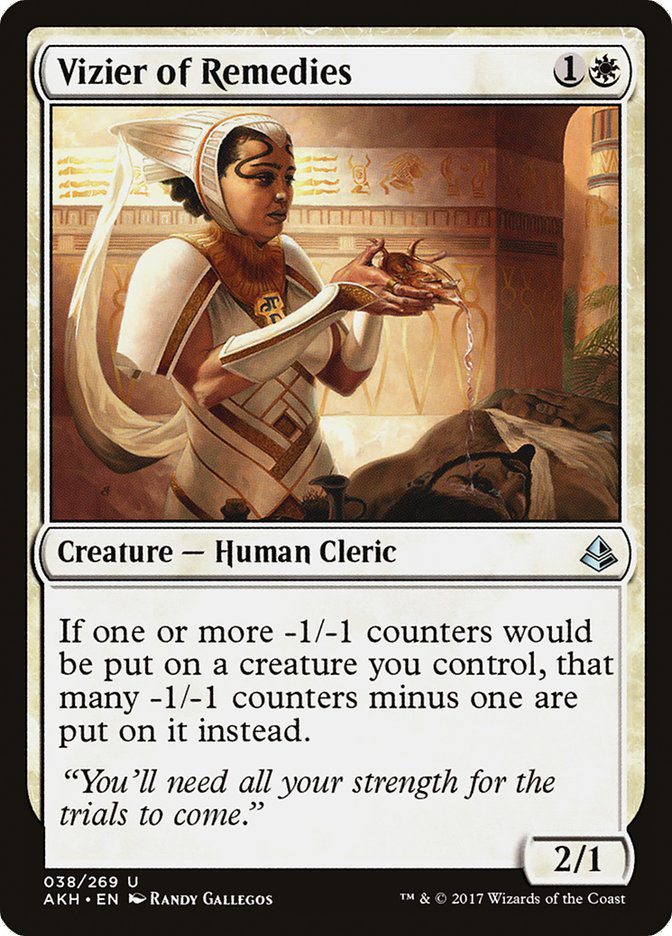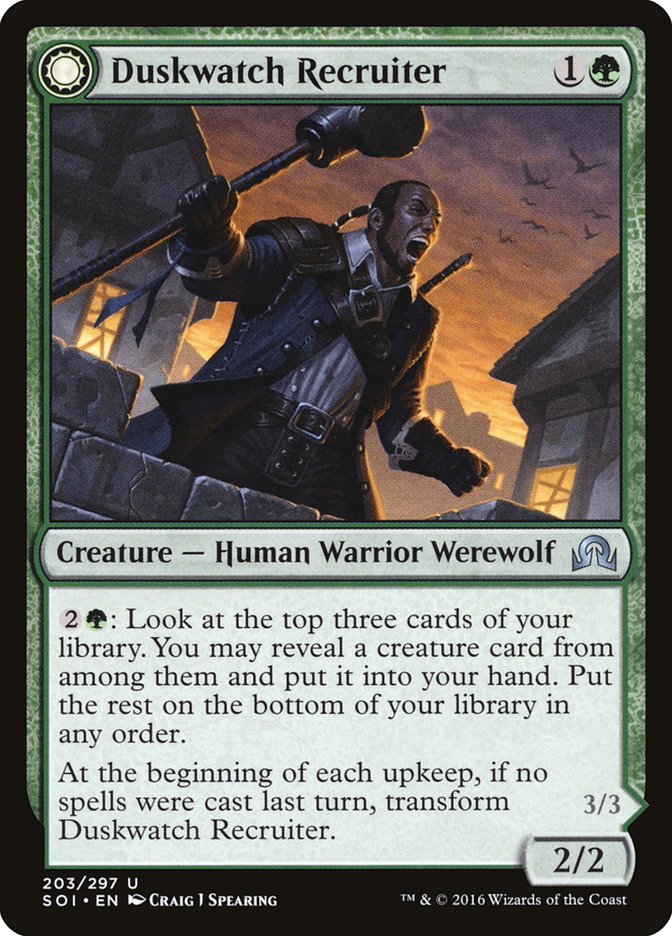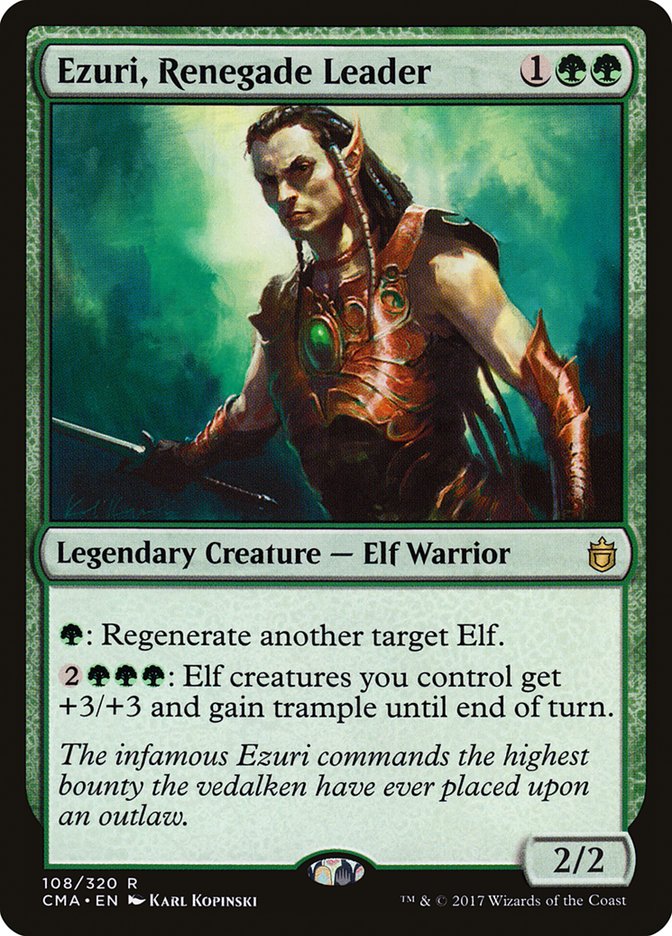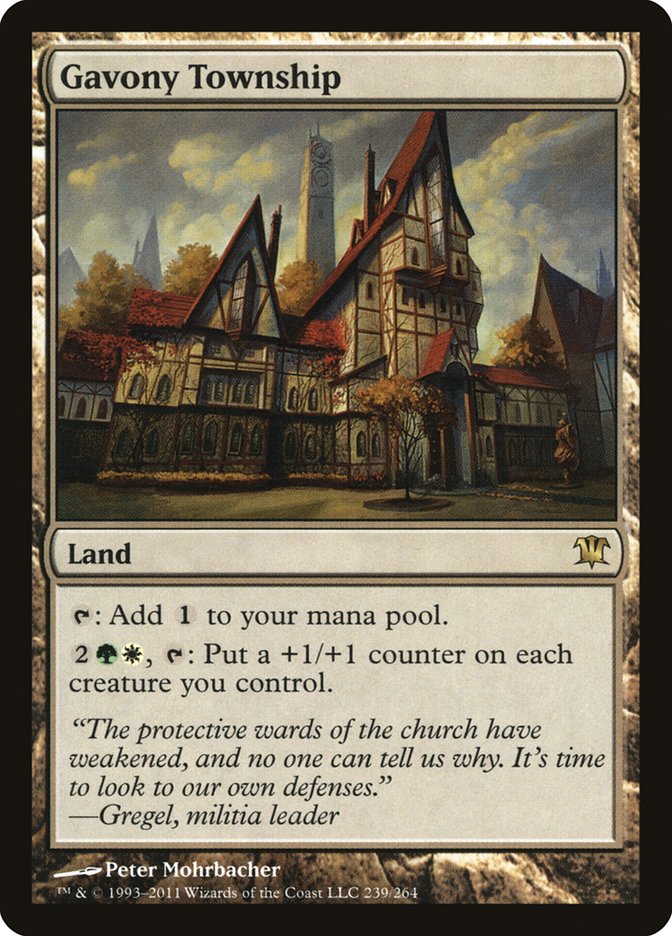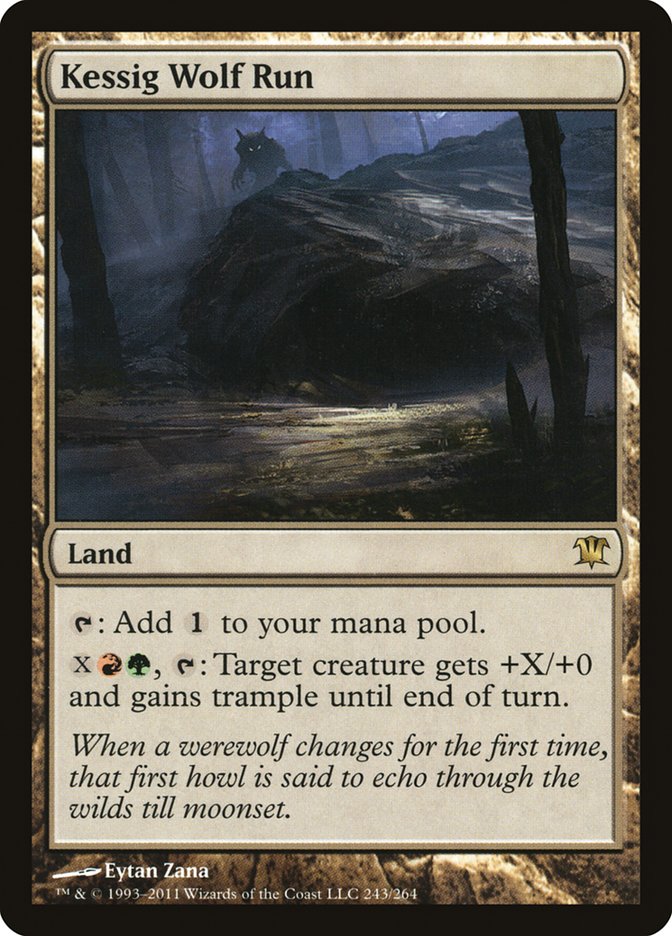Let’s talk about Collected Company.
The card dominated Standard more than any other in recent memory, forming the backbone of the best decks in the format for nearly a full year with a brief interlude for G/W Tokens. It has since become a staple in Modern too, part of a variety of decks that have consistently performed well in that format.
While I was surprised to see the card perform so well in Standard (I didn’t expect there to be the necessary volume of good creatures to go with it), its success in Modern is no surprise to me. The much larger format has plenty of good hits, more than enough to support several decks built around the card.
I’ve been playing with several such decks recently, most notably Modern Elves, and that experience has given me more insight into exactly how these decks are built, what structural problems they have due to being built around Collected Company, and how the various archetypes built around the card go about mitigating those problems.
Creatures (35)
- 4 Llanowar Elves
- 1 Eternal Witness
- 4 Heritage Druid
- 4 Devoted Druid
- 4 Nettle Sentinel
- 1 Elvish Visionary
- 4 Elvish Archdruid
- 4 Ezuri, Renegade Leader
- 4 Elvish Mystic
- 4 Dwynen's Elite
- 1 Vizier of Remedies
Lands (17)
Spells (8)

It’s time to explore the anatomy of a Collected Company deck.
The Basics
If we’re playing Collected Company, we need to be playing a lot of creatures. That’s the easy part. Creatures are great and spells are stupid. (Except in Storm!)
“Wait…I just had an idea…”
The numbers can vary, usually between about 26 and 34, and I don’t want to get into the exact math behind it because it’s not very instructive. We all know and accept that we want something in that range to maximize the power of our build around card.
The less explored issue is the curve of those creatures. In Standard, it was easy to start your curve on two and cluster your curve between two and three so that you hit more powerful creatures on average with Collected Company.
However, doing so in Modern would be disastrous. The first three turns of the game are incredibly important, and if you consistently fall behind in the early developmental stage you’re going to have a hard time winning games. Any creature deck must include a healthy number of one-drops to compete.
Needless to say, these mana creatures are weak hits off Collected Company, so to compensate, we’d prefer to have a lot more three-drops than twos. This works quite well since the mana creatures accelerate into those three-drops, leading to a natural curve. Look at Todd Stevens’s G/W Company list from last weekend:
Creatures (29)
- 1 Azusa, Lost but Seeking
- 4 Birds of Paradise
- 1 Eternal Witness
- 2 Aven Mindcensor
- 4 Noble Hierarch
- 4 Knight of the Reliquary
- 2 Scavenging Ooze
- 3 Voice of Resurgence
- 4 Courser of Kruphix
- 2 Tireless Tracker
- 2 Ramunap Excavator
Lands (23)
Spells (8)

It has eight one-drops, all mana creatures, only five two-drops and a whopping sixteen threes. That’s not an accident. The three-drops are more powerful on average than the twos and make Collected Company a more potent card. With enough mana accelerants to consistently cast them on Turn 2, you have a deck that utilizes its build-around card well while not relying on it to have a strong curve.
The temptation here is to shave as much as possible on one-drops to reduce the chances of hitting them with Collected Company, but the mana creatures are incredibly important to how these decks function and I would almost never play fewer than eight. Right now I’m looking to add even more than that to my Elves list, even though the options after Elvish Mystic and Llanowar Elves are…less than ideal. (Boreal Druid? Yuck.)
The Stumbling Block
The mana accelerant / three-drop / Collected Company curve is well-known at this point, and obviously quite powerful. However, the hole in the curve at two presents some problems when things don’t go exactly according to plan.
Please stop.
Unfortunately, our jerk opponents like to kill mana creatures on sight (rude). “Bolt the Bird” has been part of the Magic lexicon since long before I started playing, and I’m basically an old man (kids these days, uphill both ways, get off my lawn, etc.). How often do these decks have to take a turn off because their mana creature dies? In my experience, too often.
Devoted Druid decks like this one from Kyle Boggemes can try to mitigate this issue by playing a more balanced curve, but then you significantly reduce the potency of Collected Company. Paying four mana for a Birds of Paradise and a white Goblin Piker is not my idea of a good time.
This is the key balancing act all Collected Company decks need to perform. It’s a tension between the deck’s stability (its consistency and vulnerability to disruption) and its power. Of course, this tension exists in essentially every deck, but rarely does it play out in such a clear pattern.
Catching Up from Behind
There is one significant advantage to the Devoted Druid lists, and it has to do with how the namesake card affects the game state.
The threat of the combo with Vizier of Remedies is so potent that the opponent is forced to respect it as early as Turn 3. If their hand contains a single removal spell and you have a mana creature on Turn 1, they have a tough decision to make: do they “Bolt the Bird” or wait a turn to see if you also have a Devoted Druid that would be a better target?
Waiting a turn may not seem like much, but as long as the Company deck makes its land drops, they can play three-drops on Turns 2 and 3, curving ideally even if the mana creature is killed on Turn 2. If there is no Devoted Druid, you’ve likely lost your opportunity to make them waste a full turn with your removal spell.
But if you use the removal spell, then Devoted Druid either ends the game on Turn 3 or at the very least provides enough of a mana boost that losing the mana creature on Turn 1 isn’t a big deal. Devoted Druid catches them back up to the pace they were originally on.
Catching up from behind is something all good Magic decks do, but it’s typically very difficult for decks built around mana creatures. By their nature, mana creatures put you ahead early, so the cards that complement them press that advantage. Moreover, Collected Company necessitates you play so many creatures that it’s difficult to find space for the cheap removal spells that are the gold standard for playing from behind.
Of course, Collected Company itself is often great at catching you up, but it’s also the one card that is targeted the most by opposing disruption. Thoughtseizes, counterspells, and Grafdigger’s Cages all look to neuter that card, so these lists need something else.
It’s no surprise to see the fairer Collected Company decks slot three or four copies of Path to Exile in the maindeck, while the unfair ones focus on Devoted Druid as a means of playing catch-up. Path to Exile could also be Lightning Bolt or Fatal Push, should your colors allow for it; it just so happens that most Collected Company decks are green and white, and when you have few spots for removal, playing the most widely applicable removal spell has a lot of value.
The ability to play catch-up is why I particularly like Reflector Mage in Collected Company decks. It offers a reprieve from any pressure you’re under on Turn 3, perfectly leading into a Turn 4 Company while also being an excellent hit off of the card. When I play with Bant Knightfall, my list always has at least three.
The Importance of Flood Insurance
The last thing to keep in mind when building a Collected Company deck is what happens when the game goes long. Decks with a lot of mana creatures are especially prone to flooding, and these are no exception.
Mana sinks are the obvious solution, and cards like Duskwatch Recruiter; Ezuri, Renegade Leader; and Tireless Tracker excel in this role. The first two are key components of their decks, so you often find them in large numbers naturally, but Tireless Tracker is often viewed as a tool for specific, attrition-based matchups. Because of how these decks operate, I would classify it as a generically good card rather than a role-player.
Wisely, Todd’s list from above has two Tireless Trackers in the maindeck alongside a bevy of other sources of card advantage that make G/W Company the best late-game Company deck around. It’s no surprise that he often ends games with a comically large battlefield, but the deck draws so many cards that he rarely runs out of uses for his mana.
Mana sinks and card advantage are the traditional ways to mitigate flood, but mana creature decks have another angle at their disposal: making those mana creatures into significant threats.
You may know where I’m going with this, and that’s to sing the praises of Gavony Township. Kessig Wolf Run also falls in this category and appears mostly in Bant Knightfall decks splashing red, but Gavony Township is the gold standard. As someone who played a lot of Birthing Pod back when it was legal, Gavony Township was one of the most important cards in the deck. One or two activations and all of your creatures are threats, even the once-lowly Birds of Paradise.
You mostly find Gavony Township these days in Company decks with Knight of the Reliquary, so you only need a single copy as a tutor target, but the card shouldn’t be tied to Knight. It’s an excellent card on its own and you should be playing the maximum number your manabase allows for, especially in metagames where midrange and control decks like Jund and Jeskai are prevalent.
To recap, the key components to a successful Collected Company deck are:
1. Don’t skimp on mana creatures.
2. Proper balance between power and stability.
3. Have a way to catch up if you stumble.
4. Have plenty ways to protect yourself from mana flood.
Why I Play Vizier Elves
Let’s look how it scores on the four points above.
1. Vizier Elves has twelve mana creatures as well as Heritage Druid. No one makes more mana than Elves. That’s kind of their thing.
2. It has not just one but two arbitrarily large combos that your opponent has to respect, is the most explosive Collected Company deck around, and has the lowest curve so you don’t stumble as often. Yes, it does have some weaker hits off Collected Company, but the deck develops so quickly that you can often go wide with a bunch of 2/2s and 1/1s, so any two hits off of Collected Company will work.
3. It has Devoted Druid to catch up from losing a Turn 1 mana creature, has the lowest curve so it doesn’t stumble as often, and can sideboard Path to Exiles when you need hard removal.
4. Ezuri, Renegade Leader and Chord of Calling are great mana sinks and the deck only plays eighteen lands to begin with, of which four or five have some effect on the game beyond making mana. Your two lords both make great use of extra mana creatures, turning them into significant threats.
Vizier Elves is not without its faults. It’s more vulnerable to sweepers and doesn’t have maindeck interaction for opposing combo decks, but the power of the tribal synergies help mitigate many of the issues that Collected Company decks naturally have.
Collect the Rewards
Collected Company is here to stay in Modern. As more cards are added to the Modern card pool, Collected Company only gets stronger. The number of options for these decks is staggering, making tuning a Collected Company list a daunting task. But as long as you keep these basic principles in mind, you’ll end up in a good place.



